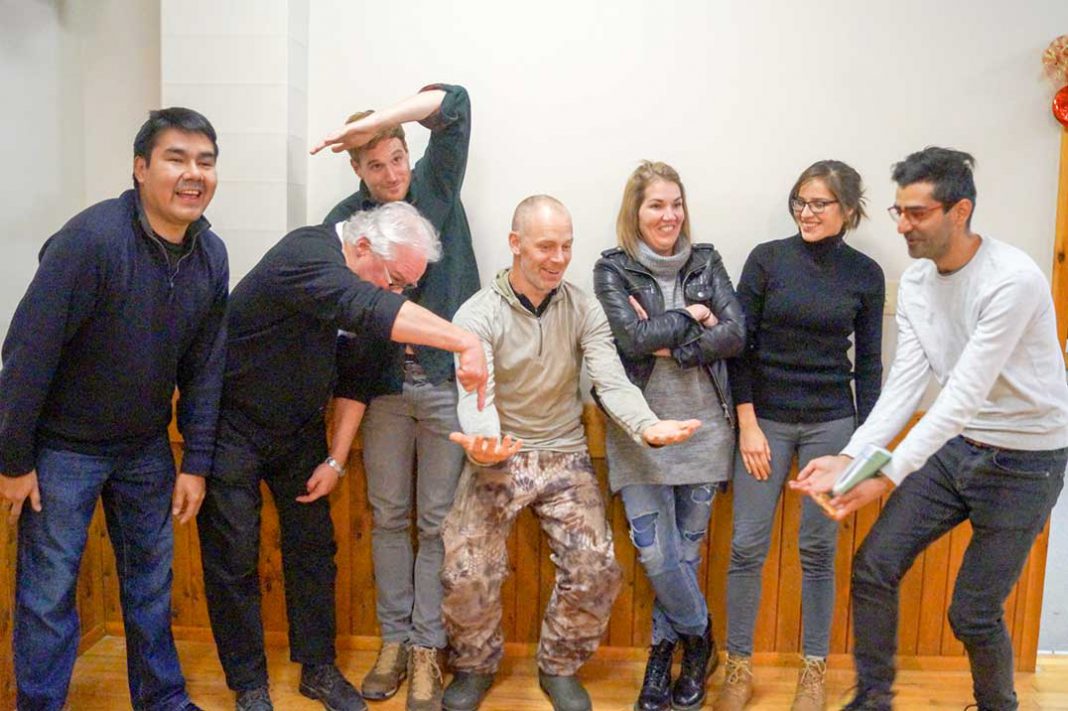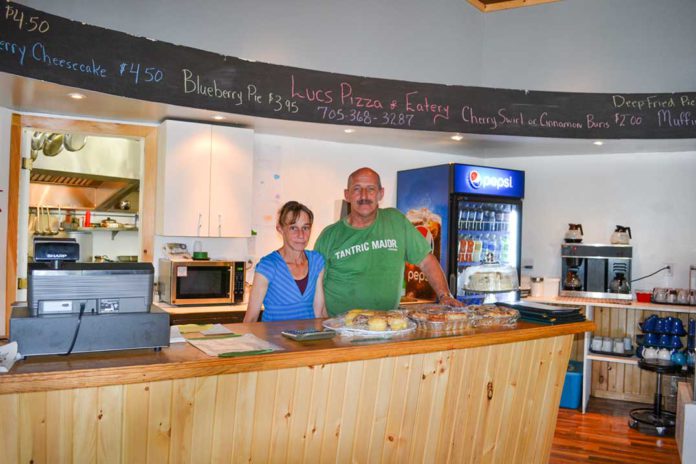KAGAWONG—What do a welder from Manitoulin Island, a graffiti artist from Toronto, and an immigrant from Iran have in common? They are among the artists chosen by a jury to create permanent sculptures for installation in the village of Kagawong and Billings township next fall during 4elements Living Arts’ third annual Elemental Festival.
Sophie Edwards, 4elements Living Arts executive director, along with program co-ordinator Patrica Mader welcomed the public to an artists meet and greet. The project would not have been possible without the grant writing skills of Ms. Edwards, and continued support from the community which includes members of the jury and local partners.
Members of the jury include Barb Erskine, Anong Beam, Sharon Alkenbrack, Louis Coulliard, Sandi Hurcomb, Charlene Chambers, Kathy McDonald, Patricia Mader and Sophie Edwards.
Local partners include Billings Township, 4elements Living Arts, Old Mill Heritage Museum and the Billings Recreation Committee.
In addressing those in attendance, Ms. Edwards began by saying “we are very excited you came.” She introduced Josh Eshkokagan from Wikwemikong who works at KTEI (Kenjgewin Teg Educational Institute) in M’Chigeeng. He will be involved in the project along with 4elements until next September.
“Thank you for the opportunity. I feel fortunate to be part of it,” he shared. “When creating something,” he continued, “there is a connection with nature which is a valuable asset. It is life: fire, earth, water and wind. We must work together to protect these resources: our water and our land.”
“We must open up our third eye to recognize clarity and create balance,” stated Mr. Eshkokagan.
His advice to the artists was to “open your heart, open your mind; create what was given to you by the Creator. It is a process to finish the piece; put emotion into it. Speak the truth (while creating it) and respect the piece and what’s around you.”
“Each of you has a gift. We open that gift: provide balance. Look inside—open your third eye and find the balance. Be gentle with yourself,” he encouraged.
Ms. Edwards then welcomed jury member Ms. Erskine to speak. “Barb has supported this project from the beginning with her encouragement and position on the jury. We are truly grateful for Barb,” shared Ms. Edwards, “she is a real champion with a vision.”
Ms. Erskine thanked Ms. Edwards for her incredible grant writing saying, “without it this project would not have happened.”
The selection began with 42 submissions and over a two-day long period the jury shortlisted the final six.
Ms. Mader then spoke about the community collaboration leading up to the Canada 150 celebrations and installation of the permanent sculptures. The artists will submit their final drawings in late February, create them over the spring and summer for installation in early October at the Elemental Festival.
Each artist was given time to speak to the audience introducing themselves including artistic background and a bit about the concept for their sculpture.
Ted Fullerton uses vertical and horizontal lines in the majority of his work. Many pieces are in exhibit at galleries or purchased as part of private collections. His interest in mythology is also evident in the sculptures he has created.
I have never believed that children should be seen and not heard, shared Mr. Fullerton. The same is true:” should not just be seen but also heard.”
The piece he has proposed expresses “walking progressively forward and upward.” It depicts three figures all moving forward, each at a different height.
Sarah Seabrook and Kathryn Corbiere are both from Manitoulin Island. Ms. Corbiere is an artist and fabricator. A sample of her work can be purchased at the Outpost General Store in Little Current. Ms. Seabrook is a designer.
“As a local artist,” stated Ms. Corbiere, “it is an honour to be chosen. I am very new at this. I hope you like the design. Our inspiration was the jack pine.” The sculpture is three trees, the tallest being 10’ to 15’ tall and 6 feet wide. The patina will rust on the one in the centre while the stainless steel ones will not.
Kwest (aka Matt), a graffiti artist living in Toronto, feels the opportunity to work on this project has “opened a quest in my life. I am honoured. This has brought me to Manitoulin Island. I have been all over: from the Northwest Territories to California.”
“Sculpture is a new challenge,” he continued. “My work would be viewed in a new life. It is such an honour. I truly love nature; reflecting on my life: fishing, hunting—listening to nature.” As for the location of his sculpture, he’s still not sure where to put it. “It is a process (finding a location). I want to connect with as many people as I can.” Kwest’s sculpture will consist of natural stone and carbon steel in its construction.
Robert Cram visited Manitoulin Island as a youngster on fishing trips with his grandfather. The Island, he shared, is “so diverse; really nice.” Mr. Cram describes himself as “nomadic,” as he has lived in a lot of different places including the Caribbean, southern Ontario (London, Guelph) and eastern Ontario (Ottawa).
The concept for his sculpture includes layers of history, ecology and natural heritage. Mr. Cram feels it is important to come to the Island, perhaps as a proposed bike residency to spend time getting to know it better in order to “get a grasp of what is going on here.” His sculpture will incorporate corn, crayfish and a propane cylinder.
Hooman Mehdizadehjafari emigrated from Tehran, Iran and has been in Canada for five months, making his home in Toronto. When he responded to the open call for artists, Mr. Mehdizadehjafari researched the the past of Manitoulin Island and became intrigued with the First Nations and their culture specifically the totem pole.
He is also interested in nature and geometry in nature; concept is to incorporate the totem in a globe shaped sphere for a sculpture.
Quinn Smallboy is from Moose Factory which is six hours from Cochrane. Having taken graphic design at Fanshawe College in London, this First Nations artist is intrigued with the intricate webbed pattern strung on the back of a hand drum which is a spiritual symbol used in ceremonies and festivals. Mr. Smallboy is very excited about putting it together: envisioning it.
When Mr. Smallboy made the decision to apply for the open call he considered how to translate his interest in the drum while keeping the theme of ‘learning from the past, sharing the future.’ His concept for the rings is based on the four medicine wheel colours: green, blue, white and black constructed from 3 1/4” steel. The drums will be 26 inches tall and represent land (green) and (blue), knowledge of the three cultures: Anglophone, Francophone and Anishnabe (white) and learning from the past (black).
Some of the proposed sites for the permanent sculptures are the Park Centre, Bridal Veil Falls hiking trail, the lower river trail, Grandor, sandy beach, Cedar Banks Cemetery and Hawk Road.





